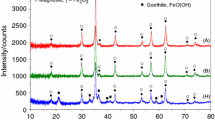Summary
The Iron Age ceramic technology used in the manufacturing of cooking pots was studied by thermo-FTIR spectroscopy analysis. The pottery was excavated at Tel Hadar on the eastern shore of the Sea of Galilee. The results demonstrate that the cooking pots were manufactured using noncalcareous or slightly calcareous raw material proceeds from soil. The firing was at about 750-850°C and the cementation to ceramic was obtained by low temperature sintering of the clay. The use of soil raw material composed of smectitic (montmorillonitic) clay enabled the low temperature sintering. The clay from soil is relatively poorly crystallized and rich in natural iron oxide, both of which induce earlier sintering. Most of the cooking pots were tempered with broken pieces of large calcite crystals that were added to the clayey raw material from an additional source. Alternative tempering with limestone particles composed of polycrystalline calcite is inappropriate as it brings about earlier and intense decarbonation during the firing, which causes defects in the pots.
Similar content being viewed by others
Author information
Authors and Affiliations
Rights and permissions
About this article
Cite this article
Shoval, S., Beck, P. Thermo-FTIR spectroscopy analysis as a method of characterizing ancient ceramic technology. J Therm Anal Calorim 82, 609–616 (2005). https://doi.org/10.1007/s10973-005-0941-x
Issue Date:
DOI: https://doi.org/10.1007/s10973-005-0941-x




